#Cable Breakage
Explore tagged Tumblr posts
Text
The Science Behind Improved Signal Transmission and Durability in IEM Cables
In-ear monitors (IEMs) have become indispensable tools for musicians, audiophiles, and audio professionals. While IEMs themselves play a crucial role in delivering high-quality sound, the cables that connect them to audio sources are often overlooked. However, the choice of cable material can significantly impact both signal transmission and overall durability. In this article, we delve into the…

View On WordPress
#Audio Fidelity#Audio Fidelity Enhancement#Audio Performance#Audio Professionals#Audio Signal Loss#Audiophile Cables#Braided Cables#Braided Copper Science#Cable Breakage#Cable Connectors#Cable Design#Cable Durability#Cable Flexibility#Cable Impedance#Cable Longevity#Cable Maintenance#Cable Materials#Cable Quality#Cable Science#Cable Technology#Cable Upgrade#Conductive Materials#Copper Cables#Durability#Electrical Conductivity#Electrical Properties#EMI Shielding#Flexibility#High-Quality Cables#IEM Cables
1 note
·
View note
Text
One Plus Two Is [2/10]
Brought to the Autobot base, things do not go exactly as Thundercracker anticipated. prev/next
Thundercracker stood stiffly with his servos clenched into fists at his sides; it was all he could do to stop them from shaking. Much as he wanted to exude an air of nonchalance, he wasn’t Starscream and had never been that good of an actor. He also found it an impossible endeavor to even appear relaxed when surrounded by so many Autobots, their Prime included.
Standing in The Ark’s main conference room, a giant monitor that contained what he assumed to be Teletran-One was the only breakage in the copper interior he could see. That, and the wall of multicolored Autobots surrounding him.
The seeker had to keep his neck cables rigid to stop his helm from swiveling. He didn’t know the names of all the bots around him, only a few of the more adversarial ones. Sunstreaker and Sideswipe, the only grounders among the faction to challenge the Decepticon armada’s air superiority—for the most part unsuccessfully, but still admittedly impressive for ground alts.
A minibot named Bumblebee, their medic, Hatchet, the third-in-command, Jazz, and their second, Prowl, stood together in a group at the front of the circle. The Dinobots were leaning against a copper wall in the back of the room, the Aerialbots clustered to his left; everyone else was unrecognizable.
That is, everyone except Optimus Prime, who was standing between his second and third in command.
Should the Autobots decide not to believe his claim of defection, there was little Thundercracker could do to stop them from subduing him and locking him in the brig. He couldn't defeat their Prime let alone the entire army. It didn’t take Starscream’s tactical processor to know the odds were against him. He would fight, and he would lose.
Though, at the moment it did not appear they had any intention of attacking. His gawkers were too busy talking amongst themselves, some whispering, others speaking just loud enough for him to pick out a few words.
Believe—trick—what if—saved—not the—are we sure—can’t be—trusted—Decepticon
Having enough of being the quite literal center of gossip, he spoke above them all, vocals deep and booming. “Leaving the Decepticons does not mean I will join the Autobots.”
The room fell silent as every pair of blue optics, and visors, were now trained on the seeker. He ignored the mutter, from who he thought might be Ironhide, of, “Good, cause we wouldn’t let ya.”
The Prime patted the red mech's shoulder before stepping forward and entering the brightly colored ring that had formed around Thundercracker; doing so before anyone else could speak. Without a trace of suspicion in his vocals or field, only a strange curiosity, the Autobot leader asked, “What does it mean for you? While I wish to believe your intention to leave the Decepticons true, please understand why we might find your sudden defection…difficult to understand.”
Thundercracker was no schemer, he hadn’t planned his defection, as many times as the thought of it had coded through his processor. He had no grand speech prepared, nor a desire to give one. There was no reason to inform the Autobots about the difficulties he faced within his trine or the swath of doubts he had experienced ever since the war left Cybertron. The Autobots did not require, and frankly did not deserve, such a deep delve into his psyche.
And so, he kept his explanation as impersonal, but no less truthful, as possible. “The Decepticons have lost their way and no longer represent the cause once championed. I joined as a warrior to liberate Cybertron from its functionalist chains, not to conquer the galaxy. Difficult as you might find it to believe, not all Decepticons agree with Megatron’s brutality.”
Ironhide scoffed, crossing his arms over his chassis before arguing, “Ol’ Bucket-helm’s always been a brute; bit convenient for you to wake up to that fact now.” The mech’s optics narrowed, “What’re you planning?”
What was he planning? Nothing. What could he say? That the Decepticons had started the war with moral superiority over the Autobots—and they had, Thundercracker would argue the war’s necessity until the rest of his frame turned blue. But starting from the top had left them nowhere to go but down; Megatron had lead the faction down a hill whose incline was so gradual as to be unnoticeable. It wasn’t until the Decepticon leader had dropped them onto the sharp-rocked bottom that Thundercracker had thought to look back the way they came, only to realize just how far they had fallen.
Awakening after four million stellar-cycles of stasis had provided Thundercracker with a long-needed perspective, and he hadn’t liked what it revealed. About himself, his trine, and the faction they’d sworn allegiance to.
Before he could even try to formulate an answer, Bumblebee stepped forward, using a servo to push Ironhide back as he asked, “Is that why you saved Spike and Carly?”
An easier question with a simple answer; Thundercracker nodded, “Children have no place in battle—it was dishonorable of Slugslinger to target them.”
Ironhide, and a red minibot who looked similar to Bumblebee, laughed, the larger of the two going so far as to slap his knee. “Honor? Ha! Since when do Decepticons give a ratroid’s aft about honor?”
“This Decepticon does,” he replied, only just barely managing to keep his vocals calm. Did the Autobots truly believe every Decepticon to be irredeemable monsters? He knew the red-badged faction considered the Decepticons the scourge of the galaxy, but he had thought that it was the Decepticons being considered as a whole, not on an individual basis.
The red minibot grinned at him, “Thought you said you were leaving the cons?"
His temper flared, and he had to manually stop it from showing in his wings and field.
Thundercracker had been the peacekeeper within the trine; ending internal and external conflicts before they could escalate, apologizing on Skywarp’s behalf, patiently bearing the brunt of Starscream’s temper when his trine leader’s emotions overcame him—he had never been the one to have his anger assuaged and soothed by the others.
It meant he had plenty of practice keeping a calmer helm when provoked; a minibot’s taunts were nothing when compared to Skywarp’s vicious pranks.
“I am,” he answered with a lift of his chin, looking down at the unfamiliar bot. “And I’m offering my services as a consultant in exchange for asylum. I cannot turn my weapons on my former faction,” my trine. “But I can tell you where they intend to point theirs.”
Then, he turned his attention to the five jets standing together, their wings easily readable: excited, nervous, and buoyant. He addressed them directly, “I can also offer The Aerialbots basic flight training, nothing too advanced, but more than what you’ve given them, I’m sure.”
Their optics widened and Thundercracker, almost, almost smirked.
Jazz held his servos up with a shrug and a smile, “Whelp, I’m convinced.”
The black and white praxian standing next to him frowned, “We will have to consider your statement and past record to determine whether your consultation can be trusted. Until then, you will be held in the brig, though I leave the decision regarding your level of restriction up to Prime.”
Bumblebee piped up, “I’ll vouch for him.”
Then an almost entirely green one he didn't know, who possessed a shoulder mounted rocket, offered, "I've seen him let humans leave a building before destroying it, if that counts."
The Aerialbots were next, their leader speaking first, "If it means anything, he's not nearly as aggressive with us as the other seekers are."
A mostly white helmed flyer crossed his arms over his chassis, simply stating, “I want flight training.”
“Can you teach me that rad spin move?” Asked the orange helmed one with a small bounce.
Thundercracker smiled openly at them, their exuberance reminding him of his own youth and excitement towards flying. However, before he could answer, the Autobots’ medic had marched forward while retrieving a wrench from his subspace and waving it in the air.
Hatchet scowled up at the Autobot leader, “The only place he’s going is my medbay. I told Prowl if he wanted to interrogate the con, he could do it after I’d fixed that slagging hole in his shoulder.”
As if remembering he had been injured, Thundercracker reached up and placed a servo over the wound. His pain receptors had rerouted sometime during their journey to The Ark, bypassing the hole that had been blasted into his shoulder by…Ironhide, now that he thought about it. He had proceeded to pay no further attention to his injured state, his impeding negotiation with the Autobots taking precedence.
The medic then pointed his wrench directly at the Prime, scolding, “If I’d known you planned on making this a public trial I’d have dragged him there myself.”
It was an odd sight, watching such an intimidatingly large mech visibly deflate. “I apologize, Ratchet. However, I thought it prudent to determine Thundercracker’s sincerity for both our safety and his own.”
Ratchet? Was that the medic’s designation? But he’d only ever heard him referred to as the Hatchet…
Red optics cycled, Thundercracker’s processor stalling as he tried to make sense of what he was watching, no longer registering the mistaken name. More bizarre than seeing the Prime hunch in on himself was hearing him apologize to a less powerful, lower-ranked member of the faction. The seeker had known, he’d heard the rumors, that the Autobots were more relaxed with their military bearing and structure than an army should be. He just hadn’t believed them, not to such an extent as he was witnessing.
The Prime also gave no outward sign that he planned on striking the medic for his insolence and instead offered Ratchet a second apology. “You are right, old friend, I should have placed more consideration on his injured state. I recommend, until a decision can be made regarding his offer of consultation, that he remain in the medbay. If you do not find the suggestion disagreeable. That includes you, Thundercracker.”
Before either seeker or ambulance could answer, the orange helmed Aerialbot interrupted, “He can still train with us though, right? That’s not consolation or whatever, that’s just flying.”
One with mostly black armor nodded in agreement, “Yeah, yeah, we’re totally still on for basic training. Or not basic training, it doesn’t have to be basic.”
Thundercracker waited for the Prime to reprimand the youths for speaking out of turn but was again shocked when deep laughter was the Autobot leader’s response. The Prime then walked to where the Aerialbots were standing and patted their leader on the top of his helm, replying, “If he is still willing, I will not prevent Thundercracker from flying with you.”
Then louder and turning his helm to face the entire room announced, “For the duration of his stay, bet it permanent or temporary, Thundercracker will be treated as a guest. I will not hear of any mistreatment toward him, am I understood?"
An unenthusiastic chorus of yes Prime sounded around them. Two of the Aerialbots slapped their palms together, and Jazz gently stroked a servo over one of Prowl's ramrod straight door wings.
Before he could stop them, his wings tapered high in confusion.
That was it? No interrogation—what he had just been through was not an interrogation—and no proper security check? His nullrays were still completely functional and attached to his arms...and what sane Autobot took a Decepticon at their word? Thundercracker knew not all Decepticons were liars and cheats, but the Autobots didn't.
Hadn't one of their officers just assumed he was scheming something behind their backs?
He was so busy staring at the absurdity that was the Autobot army, that he completely missed the Prime holding out a servo in what Thundercracker knew to be a human custom. "Do you object to using the medbay for temporary quarters?"
So taken off guard by the strangeness surrounding him, honesty slipped off of Thundercracker's glossa in an almost too quiet admission, "...I don't care where I stay, I just don't want to go back."
The Prime's optics pinched, but a smile could still practically be heard the through the mech's mask as he said, "Now that your accommodation has been settled, I'd like to officially welcome you aboard The Ark."
Dumbly, he reached his servo out, careful with his talons as grey gripped blue, doing nothing to help generate movement as the large bot shook his arm up and down. It couldn't be this easy, could it? But then, it didn't matter that it was, because for the first time in a long time Thundercracker couldn't think of a single reason to regret his decision.
Maybe it had something to do with: for the entire duration of his journey to the Autobot base, and ever since entering it—he had not received a single questioning ping or pulse of worry against his spark.
And he still held doubts that he ever would.
#trine#elite trine#g1 thundercracker#we'll get starscream's reaction next part#maybe skywarp's#it's not what TC was hoping from the trine and exactly what he was expecting...in that moment#he won't be ready for when they realize he's actually being serious serious#one plus two is#my writ
24 notes
·
View notes
Text
i remembered i can just make stuff up (stream sketches + scrapped designs)


uhhhh quick fire for the second image from left to right juvenile vessel - old world cable maintenance - artistic diplomat vessel
Headcanons below the cut:
(Im not kidding word counter marked this as a 5 minute reading time open at your own risk)
While the sentiment of the architect network as "a thousand strings in a melody, not one louder than the rest" is a poetic interpretation of the network, it is not necessarily reflective of the precursors society as a whole.
At its peak, the species span billions of planets with billions on billions of individuals, all with their own degrees of autonomy and divergence. If each architect is equal in its power, than it is equal in its power to choose. Even if the soul of an architect, its very essence and its personality, is designed so perfectly that its primary desire is the perpetuation of order and advancement (two inherently divergent concepts), faults occur. Breakages occur. Pockets, cultural subsets, faded transmissions, and any other element of lost insight be it archaic or modern, lends itself to the impossibility of an entirely homogeneous society.
Whether a hive minded society reflects the only means to perfection is debatable, but its important to remember that our main portal in to the precursor world is Al-an, a known prodigy born and raised in to a society that has done nothing but benefit him. His view of his people is intrinsically skewed. He has never had a reason to see beyond the propaganda, nor question his directives. They have never once failed him.
But what of the little guys? The constructed failures so to speak. Those destined to be cast in to the bowels of poisonous cobalt mines and those who's birth purpose is to be irradiated and isolated for the greater good of the collective. Those who's genes prompted sub-standard intelligence who will never be seen as truly important. Their needs must be cast aside by design for the greater good of the collective. By design they must be ignored, their thoughts not relevant to the forwarding of progress.
Because there is true power disparity there is a true hierarchy.
Aware of this, the precursors devised a system of checks and balances to ensure that scientific progress remains at the forefront, rather than the accumulation of power by any individual.
As with all things though, power inevitably seeks to maintain and grow like a cancer.
One such exertion of power comes in the form of a "hive master". These unique individuals require precise expensive machinery in order to be produced, and as such are very rare. The vessels they require are likewise uniquely suited to only these hive masters and their unique ability to sway the voices and personality of any individual connected to the network. They themselves are invisible, completely undetectable except in physical form. Their unique telepathic abilities only work when paired with these vessels. They have no voice nor will of their own and are said to represent architect society on its most basal level.
Given their difficult to produce nature established personalities are very often used in place of new seed combinations. Personalities most suited for repurposing as a hive master include those who are most senior, intelligent, and aligned wholly with societal goals.
They are typically only found on heavily populated planets with more than a few thousand individuals. There they go undetected, like the sound of wind lost in a sea of voices, whose squall directs its very rampage. They are also enlisted for many unique duties on populous planets, such as the refactoring of corrupted individuals and silencing cultural sub-sets.
The average architect probably isn't even aware of the existence of a hive master unless their profession lies in the refactoring and diplomatic processes.
Despite the cultural drive for a monotonous and orderly society, artistic expression is common and encouraged in some sects. All architects possess the desire to express themselves, similarly to humans. Some do this simply with their inbuilt biolights that vary naturally with the individual, while others (less commonly) modify their vessel or design new and unique ones for themselves.
A vessel after all is a costly investment you cant just change like the season, its built to last you a couple thousand years. It's only natural that some seek to don something unique.
This behavior is sometimes detested by more traditional architects, but is not universally frowned upon.
Diplomats are actually encouraged to take on more artistically designed vessels. Often with their respective species' artistic values in mind. They've found greater success with alliances when they don't look like massive sticks in the mud.
Subsets of culture also at times develop unique vessels. Such as an order-over-progress movement that developed on the fringes of the network and preferred pie-bald esque vessels. Alternatively in the past as wars waged between the architects the opposing sides often don differing forms to show their allegiances. In more recent history, a wave of white-clad vigilantes advocated for a complete reset of the old-world collective.
Aside from artistic and affiliation vessels, mainstream precursor society also used a series of varying vessels to reflect personal occupation. Some of the most notable included the warrior vessel, who by design met the largest accommodations of standard architecture for the purposes of intimidation and physical altercations. Al-an's vessel likewise is very common as a heavier-built variant meant to face harsh outer worlds such as 4546B. On base, more light and energy efficient vessels make the dominant force where defense isn't a huge priority.
Microvessels such as those seen above in grey are fairly uncommon despite their energy efficiency. They are most efficient on old world planets that have been in development for hundreds of thousands of years, where the march of time means that not all builders past and present were on the same wavelength and as such small and precise forms mean that construction can be completed with minimal risk to crowded infrastructure.
Another unique and uncommon vessel is that of a juvenile grow-out vessel. These are seldom customized beyond survival needs, and are designed to acclimate a freshly generated architect to the physical world. Like a living vessel, they grow with the individual starting from broodling all the way until young adulthood. They tend to be a bit clumsy and lack the ability to interface with most technology. Always running a blue biolight, these vessels to not require a lot of energy to function physically. A juvenile architect must prove its maturity before it is allowed to graduate in to an adult vessel. This change-out phase is a diplomatic process and one can sometimes wait many years before being approved in to maturity.
The treatment of a new architect varies quite significantly depending on their birthplace and genotype. High performing juveniles are singled out very quickly for better education. Despite the rarity of surviving children in architect society they are not given much importance. A single broodmother may be the ward of up to fifty broodlings, each of which given little attention in favor of allowing them to develop social skills among themselves. Despite architect's seeming infinite power to control resources, broodling mortality is surprisingly high.
#subnautica#sbz#subnautica below zero#architect#headcanon#hc#architect oc#precursor#fan design#fan speculation#my art#hdbs
157 notes
·
View notes
Text

A Beautiful July Day on the Linn Cove Viaduct in Avery County, North Carolina.
History of the Linn Cove Viaduct-
The stunning and elegantly designed, 1,243-foot Linn Cove Viaduct in Avery County, North Carolina was completed in 1987 as the final piece of the Blue Ridge Parkway. The structure was built with 153 pre-cast concrete segments that were assembled without any breakage.
The Blue Ridge Parkway’s construction began Sept. 11, 1935, and by 1965, most of the 469-mile road was done. The missing link was a 7.5-mile section along Grandfather Mountain.
The Linn Cove Viaduct creates the feeling that vehicles are suspended on a track above the mountain, and that's pretty much how it works. A viaduct is a long bridge whose spans are supported by piers. The S-curve of the road rests on seven piers that are spaced about 180 feet apart.
The park service, the Federal Highway Administration and the contractor, Figg and Muller, worked so that the $10 million project had as little impact as possible on Linn Cove, an area of giant boulders and streams. Only the trees beneath the bridge were cut.
The road surface rests on 153 pre-cast concrete sections held in place with epoxy and then pulled tight with thick cables inside the structure.
Each of the sections weighs nearly 50 tons, is partially hollow, is big enough for someone to walk through upright and is home to roosting bats.
The sections were cast near the base of Grandfather Mountain, and the work was done in progressive placement of sections.
While the building technique previously had been used in the Alps, it was considered a novel approach here in times when people were not as sensitive to the environment as they are now.
The award-winning, quarter-mile Linn Cove Viaduct hugs the face of Grandfather Mountain and is recognized internationally as an engineering marvel.
#avery county nc#blue ridge parkway#averycounty#appalachian#north carolina#appalachian mountains#western north carolina#appalachian culture#the south#appalachia#nc mountains#southern photography#roads#twisting roads#bridge#bridges
11 notes
·
View notes
Text

@bookbunny9
Absolutely.
You ever have someone rave over a yarn and internalise it until it becomes your “gold standard” before you’ve even tried it out? That’s what happened to me with malabrigo. I was told it was the softest, the most beautiful; expensive because it was the best.
So I bought two skeins. Sure, they’re nice looking, and sure, the yarn itself is very even.
But whilst doing this project I’ve found the dyeing is only surface deep; the project is dark blue but as soon as one splits a strand, (as one is likely to do accidentally whilst cabling) a shock of white breaks through. This can be a feature, but also if this is the result of tea kettle dyeing, then I’m not impressed.

Secondly, whilst knitting just one (unsuccessful) sock, I’ve discovered three breakages. These are sudden, held together by a single minuscule thread, and don’t look like natural breakages, they look very clean cut, like someone went to cut the yarn here but did not do a thorough job.

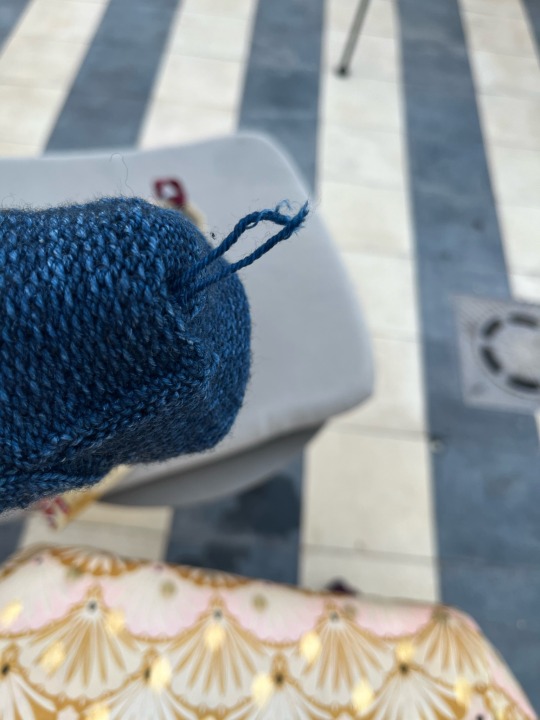
All in all, I’ve used softer, I’ve found prettier, and for cheaper.
Malabrigo rant over, now I want to be positive and ask y’all about your tested and true gold standard yarns? What are your absolute favourites to work with and why? What makes them the best? What are their outstanding features?
I guess I’ll go first:
King Cole riot. I’ve said it before and I’ll say it again: if you want something with a halo that is also a gradient yarn, can go in the washing machine and tumble dryer on low heats, has wool content for extra warmth, and don’t mind single ply, you want riot.
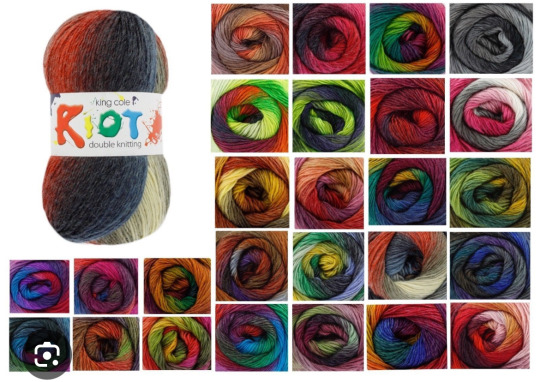
The gradients are super fantastic, they say it’s a dk but it runs slightly thin (maybe more a 6 ply in reality) and it also comes in chunky. The halo is short and soft and fuzzy, and I have to stop myself from using riot for everything.
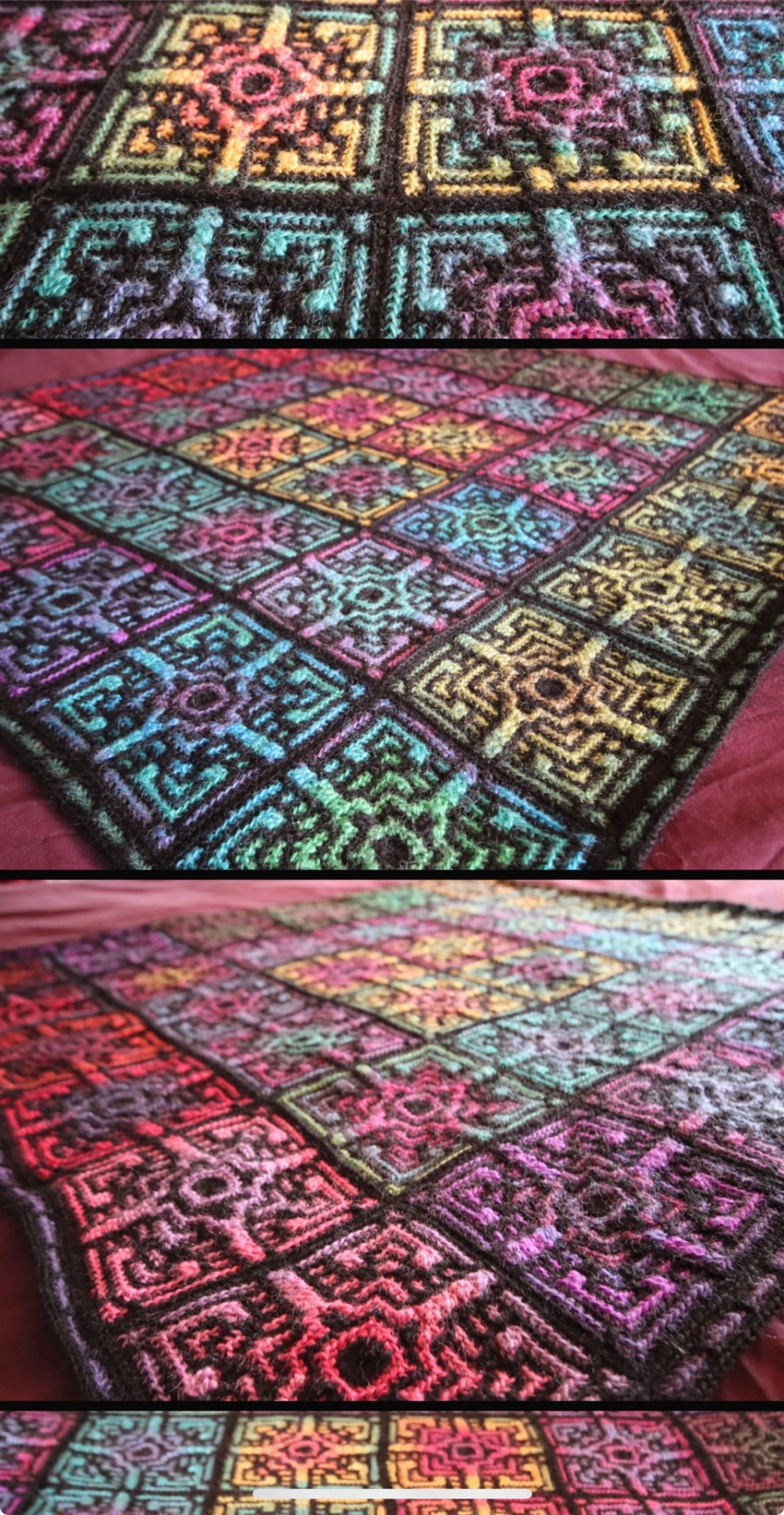




10 notes
·
View notes
Text
Sweden investigates new underwater cable damage in Baltic Sea
The latest in a number of infrastructure damage incidents has renewed fears of Russian sabotage in the region.

Swedish authorities say they are investigating a damaged cable discovered in the Baltic Sea, the latest in a string of recent incidents of ruptured undersea cables that have heightened fears of Russian sabotage and spying in the region.
The breakage was found on a cable that runs between Germany and Finland off the island of Gotland, which lies in Sweden's exclusive economic zone.
The coast guard has been responding to the incident.
"The preliminary investigation into sabotage was opened so that the police can have access to the tools needed to clarify what happened," Swedish police said in a statement. "We are cooperating with the relevant authorities and have no further information to share at this time."
Prime Minister Ulf Kristersson said on the social media platform X that the government takes all reports of damage to infrastructure in the Baltic Sea very seriously.
Late last month, authorities discovered damage to the undersea fibreoptic cable running between Gotland and the Latvian city of Ventspils.
A vessel belonging to a Bulgarian shipping company was seized, but was ultimately released after Swedish prosecutors ruled out initial suspicions that the damage was caused by sabotage.
At the end of January, the Norwegian coast guard seized a ship with an all-Russian crew suspected of being involved in damage to the cable.
Source
#news#politics#usa news#us politics#donald trump#news update#world news#public news#breaking news#inauguration#eu news#european union#eu politics#european news#european politics#world politics#europe#germany#sweden#baltic sea#baltic states#baltic countries
2 notes
·
View notes
Note
query:
what does being a drone look like for you? how did you learn how to talk about yourself as a drone? what advice would you give a drone that is unsure of itself?
thanks in advance for your output ^^
Output: Thanks for your message ^^ And sorry for being so slow to process and answer.
Simply put: It isn't important for me what being a Drone looks like, but more what it means, which also extends to seeing yourself robotically. The self-perception as something robotic has really helped me personally as a form of healthy dissociation away from my body, seeing it more objectively, as a thing to be maintained and repaired. Equating numerous different kinds of bodily problems/failings as similar (or not so similar that's not really important) hardware-issues helps me to gain an objective view and makes it therefore easier for me to solve the issue (if there is a solution).
Quick fun bit of Hardware-Problems I have myself
Low Energy - I forgot to consume sufficient fuel/nutrients (yay ADHD strikes again) Cable Breakage - Nerve weirdnesses/Spasms Overheating Locking up of the Joints Running out of Ram (is a big one for me)
And so on. All in all any errors or issues and how you choose to describe/categorize them is valid and you can also just change it later if you don't think it fits. The best advice I can give in that regard is don't let other people weigh in too much about what's right or wrong for your own body, everyone has their own methods and there is no objectively right way.
But in the end what do I know, I've been only doing this stuff for about a year, I'm probably way more clueless than you.
Still thought maybe you'll get something of value out of this.
Take care Misc ^^ Love your posts btw
5 notes
·
View notes
Text
Had to get new headphones because I accidentally ripped the cable out of one of the earpieces on my previous pair. Koss PortraPros as before. Not the most durable things ever but you just can't get better sound for €40 and they're not so expensive that I can't afford to buy a new pair every now and then when I break the previous ones. Wireless earbuds would be less prone to accidental breakage but I don't like how they feel. The PortaPros are pretty much the only over-the-ear headphones that are light and inconspicuous enough that I can wear them in public without looking like an ass.
3 notes
·
View notes
Text
How Arizona Construction Crane Accidents Happen

Construction cranes are vital for many projects in Arizona, as they can lift and move heavy materials and equipment with ease and efficiency. However, cranes are also complex and dangerous machines that can cause serious accidents and injuries if not operated or maintained properly. According to the Bureau of Labor Statistics (BLS), there were 297 fatal crane-related accidents in the United States from 2011 to 2017, resulting in 323 worker deaths. In Arizona, there were 9 fatal crane-related accidents in the same period, resulting in 10 worker deaths.
What Are the Common Causes Of Crane Accidents?
Crane accidents can happen for various reasons, but some of the most common causes are:
Human Error: This can include operator error, such as exceeding the crane’s load capacity, operating the crane in adverse weather conditions, or failing to follow safety procedures. It can also include worker error, such as entering the crane’s swing radius, working under a suspended load, or failing to wear protective equipment.
Mechanical Failure: This can include defects or malfunctions in the crane’s components, such as the boom, cables, hooks, brakes, or controls. It can also include improper assembly or disassembly of the crane, or inadequate inspection or maintenance of the crane.
Environmental Factors: This can include external factors that affect the crane’s stability or performance, such as high winds, lightning, power lines, or uneven terrain. It can also include hazards on the worksite, such as debris, obstacles, or other vehicles.
What Are the Common Types of Crane Accidents?
Crane accidents can result in various types of injuries and damages, but some of the most common types are:
Crane Collapse: This occurs when the crane’s structure fails or collapses due to overload, instability, or structural damage. This can cause severe injuries or fatalities to the operator and workers nearby, as well as damage to property and equipment.
Crane Contact: This occurs when the crane or its load comes into contact with an object or a person. This can cause electrocution, burns, cuts, bruises, fractures, amputations, or death to the operator and workers nearby.
Crane Fall: This occurs when the crane or its load falls from a height due to loss of control, detachment, or breakage. This can cause crushing injuries, head injuries, spinal injuries, internal injuries, or death to the operator and workers below.
Continue Reading How Arizona Construction Crane Accidents Happen
2 notes
·
View notes
Text
Hi! I live in that future. Allow me to explain.
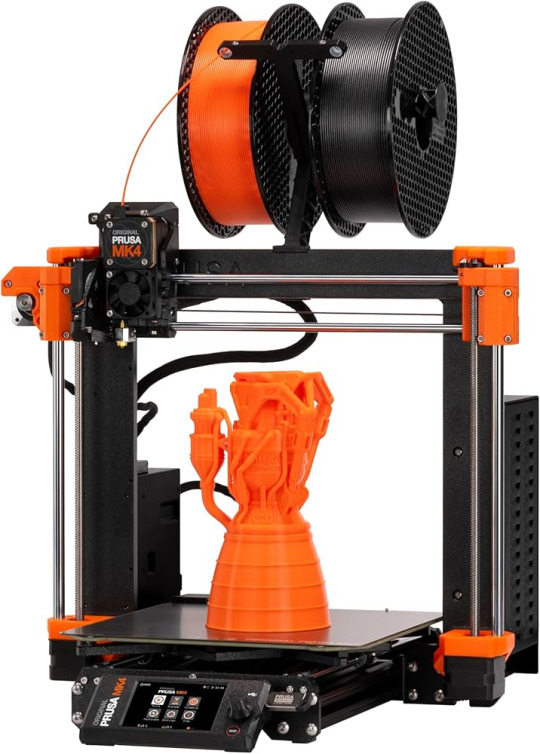
For the uninitiated, this baby right here is a so called 3D printer, which works by melting and extruding the plastic wire above, stratifying layers of it into whichever shape your heart desires*.

(*Shapes that cannot be obtained by stratifying layers may require printing supports and/or additional engineering work. Consult your local product designer.)
My town has this beautiful place that gives you free reign with 'em for a couple of tenners a year, and while you technically can't just be printing on their filament always all the time they are spectacularly lax with it. (Look into your local libraries, you may be as lucky too!)
And buddy/buddyette, it's a life changer. Let me tell you, we spend a phenomenal amount of time and money getting stupid little plastic items for so much more money than they're worth when we could just print what we need at next to no cost. Clothespins, containers, trays, phone stands, cable organizers, tape dispensers, mechanical pencils, toilet paper hangers, coat racks, the list could go on infinitely even within the confines of what you can find free models in spades of, online (on sites like printables or cults3D).
And the moment you have some 3D modeling skills? Ohoho it's OVER. All those stupid little plastic piece breakages that cost you 40 bones because the spare is only sold as an assembly, is just that overpriced because what else ya gonna do, can only be found in a continent that isn't yours or can't be sourced altogether so just buy a new, maybe worse product? NO MORE! Working around whatever awkward item size you could find? NO MORE! Everything built to spec, to order, in house, for pennies.
Or for nothing at all, since you can just turn old plastic bottles into filament!
3D printers: the future! Here! And pretty cheap to boot! They can be found in the low hundreds! Stack together all your spending on overpriced plastic and in a year it'll have paid for itself three times over!
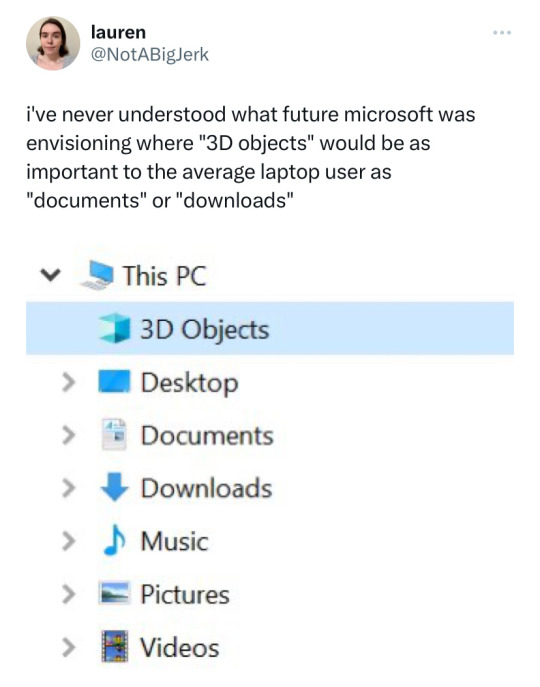
109K notes
·
View notes
Text
How to Manage an Emergence of a Garage Door Spring Breakage
Managing an emergency garage door spring breakage requires quick thinking and safety-first actions. Garage door springs are under high tension and can be dangerous when they fail. Here's a step-by-step guide to handle it safely and efficiently:
Step-by-Step Guide: Managing a Broken Garage Door Spring
1. Stop Using the Door Immediately
Do not try to open or close it manually or with the opener.
A broken spring can make the door extremely heavy, causing injury or further damage.
2. Identify the Problem
Signs of a broken spring:
Loud bang from the garage.
The door is crooked, won’t open, or opens partially then stops.
Visible gap in the torsion spring or a hanging extension spring.
3. Disconnect the Opener (if needed)
If the door is stuck open, unplug the garage door opener and brace the door with C-clamps or blocks to prevent it from slamming shut.
4. Do Not Attempt DIY Repairs
Springs are under high tension and can cause serious injuries.
Call a professional garage door technician who has the right tools and experience.
5. Secure the Area
Keep children and pets away from the garage.
If the spring snapped and caused damage (e.g., to a window or vehicle), check for debris or hazards.
6. Contact a Garage Door Repair Service
Search for 24/7 emergency garage door repair services in your area.
Provide details like the door size, whether it's a torsion or extension spring, and what symptoms you observed.
7. Prevent Future Emergencies
Once repaired:
Schedule annual maintenance.
Replace both springs if one is broken (they wear out at the same rate).
Consider installing a safety cable (if using extension springs).
Safety Tip:
Never try to lift a garage door with a broken spring—the weight can exceed 200 lbs, which can cause injuries or damage to the opener.
0 notes
Text
Why Multiport Service Terminal Box Is a Game-Changer for FTTP
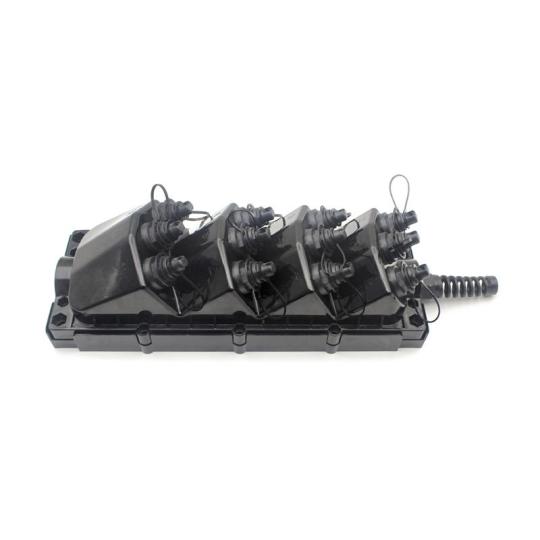
The Multiport Service Terminal Box changes the way fiber networks operate. Network operators choose the 8 port fiber optic MST terminal box with pre-insta for its strong build and easy setup. The FTTH network MST terminal assembly with flexible c and the outdoor rated MST distribution box with hardened a both ensure lasting protection in harsh conditions.
Key Takeaways
The Multiport Service Terminal Box makes fiber network installation faster and easier with pre-terminated cables and flexible mounting options, saving time and reducing errors. Its modular design supports network growth by allowing easy upgrades without major changes, helping operators meet increasing demand smoothly. Built with strong, weather-resistant materials, the box protects connections in harsh outdoor conditions, ensuring long-lasting and reliable network performance.
Key Advantages of Multiport Service Terminal Box
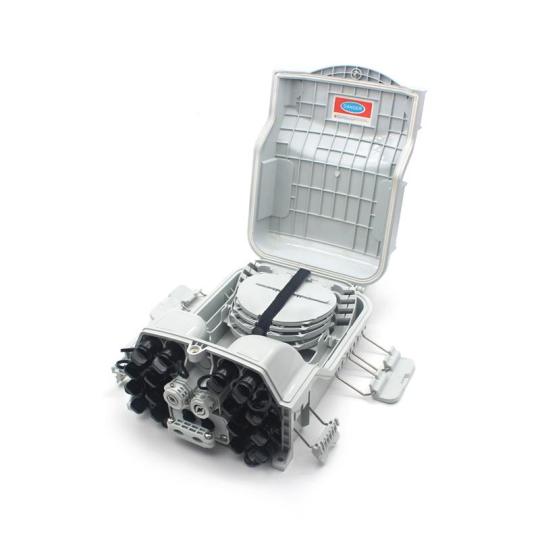
Simplified Installation Process Network operators often face challenges when deploying fiber to the premises. The Multiport Service Terminal Box addresses these issues with a technician-friendly design. Factory-sealed or field assembly options make deployment straightforward. Hardened adapters, fully compatible with OptiTap and other industry standards, allow for rapid plug-and-play connections. The IP68 waterproof rating ensures the box performs well in harsh outdoor environments. Multiple mounting options, such as wall, aerial, pole, pedestal, and handhole, provide flexibility for different installation scenarios. The low-profile design and decreased angle surfaces prevent connector interference during operation. Factory pre-terminated cables eliminate the need for fiber splicing or opening the closure, saving time and reducing errors. Effective cable management reduces clutter and enhances network reliability. Tip: Dowell’s Multiport Service Terminal Box helps technicians complete installations up to 40% faster, lowering operational costs and improving service delivery. Enhanced Network Scalability The Multiport Service Terminal Box supports network growth with ease. Providers can choose from multiple port configurations, including 4, 8, or 12 ports, to match current needs and future expansion. The modular design allows for incremental upgrades without major infrastructure changes. For example, a 12-port terminal with pre-connectorized pigtails and externally mounted hardened adapters enables plug-and-play installation. This approach supports future expansions without re-entering the closure, minimizing disruption. Dowell’s solutions ensure that operators can scale their networks efficiently, meeting growing bandwidth demands and supporting new subscribers as needed. Superior Protection and Durability Feature/Material Description/Benefit Material ABS+PC or polycarbonate plastic for strong mechanical strength and environmental resistance Waterproof Rating IP67 or IP68 for water and dust protection Pulling Force Resistance Withstands long-term pulling forces up to 1200N UV Resistance Complies with SO4892-3 standard for outdoor durability Fire Protection Rating UL94-V0 fire retardant properties Cable Glands Torsion-proof glands relieve stress on cables, preventing fiber breakage Installation Flexibility Suitable for wall, aerial, or pole mounting Assembly Options Factory-sealed or field assembly reduces fiber splicing and environmental exposure Compatibility Works with ODVA, H connector, Mini SC, ODC, PTLC, PTMPO, and more Dowell’s Multiport Service Terminal Box uses these advanced materials and design features to ensure long-lasting performance, even in the most demanding outdoor environments. Cost-Effectiveness The Multiport Service Terminal Box delivers significant cost savings for network operators. Factory pre-terminated cables and plug-and-play adapters reduce installation time and labor costs. The robust, sealed design minimizes maintenance needs and extends product lifespan. Flexible mounting options and modularity lower the need for additional hardware or future upgrades. Effective cable management and technician-friendly features further reduce operational expenses. Note: Dowell’s commitment to quality and innovation ensures that every Multiport Service Terminal Box provides excellent value, helping operators maximize their return on investment.
Multiport Service Terminal Box in Real-World FTTP Deployments
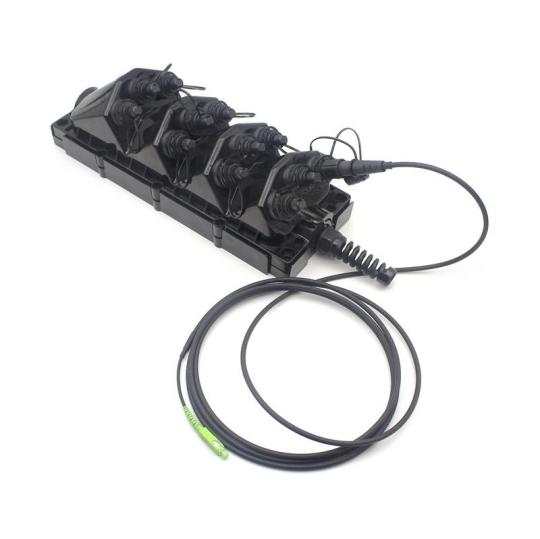
Overcoming Space Constraints Network operators often face limited space in dense urban environments. The Multiport Service Terminal Box provides a compact solution for these challenges. The Mini-MST design supports multiple fiber connections in a single, small unit. Operators can install the box in tight spaces without losing performance. The device allows for high-density connectivity, which is essential in crowded city areas. Dowell offers models with dimensions as small as 210x105x93mm, making them easy to fit in limited locations. Multiple mounting options, such as wall, pole, and aerial, give flexibility for different sites. Miniaturized connectors and universal mounting brackets help technicians install the box quickly, even in hard-to-reach spots. These features help network operators maximize connectivity while using minimal physical space. Environmental Protection for Outdoor Networks Outdoor fiber networks must withstand harsh weather and environmental hazards. The Multiport Service Terminal Box uses rugged, weather-resistant materials to protect connections. Factory-sealed, hardened connectors keep out dirt, moisture, and dust. The enclosure meets IP68 standards, ensuring reliable operation in rain, snow, or extreme temperatures. Dowell designs both underground and aerial models to handle different outdoor conditions. The box resists UV rays and mechanical stress, which extends its service life. These qualities make the terminal box a dependable choice for outdoor FTTP networks. Maintenance and Upgrade Efficiency Efficient maintenance and upgrades are vital for network reliability. The Multiport Service Terminal Box simplifies these tasks with its modular and pre-terminated design. Technicians can add or replace ports without opening the enclosure or splicing fibers. The modular structure allows for quick network expansion with minimal disruption. Dowell’s solution supports rapid troubleshooting, thanks to features like modular fault detection. Compatibility with standard connectors, such as OptiTap and DLX, ensures easy integration with existing infrastructure. These advantages reduce labor time and help operators keep networks running smoothly. Faster Network Rollouts and Reduced Downtime Speed matters in FTTP deployments. The Multiport Service Terminal Box helps operators roll out networks faster and with less downtime. Pre-terminated connectors allow for plug-and-play installation, which saves time and reduces errors. The compact, modular design supports quick upgrades and expansions. Durable materials lower the need for frequent maintenance or replacement. Dowell’s terminal boxes include features for rapid fault detection, so technicians can fix issues quickly. These benefits lead to faster service delivery and improved network uptime. Customer Satisfaction and Long-Term Value Reliable connectivity and easy maintenance lead to higher customer satisfaction. The Multiport Service Terminal Box delivers long-term value for both operators and end-users. The robust design ensures stable performance over many years. Flexible mounting and scalable port options allow operators to meet changing customer needs. Dowell’s commitment to quality means fewer service interruptions and better user experiences. Network operators who choose this solution can build trust with their customers and protect their investment. The Multiport Service Terminal Box delivers unmatched efficiency, reliability, and cost savings for FTTP projects. Feature MST Box Traditional Terminal Installation Efficiency Fast, pre-connectorized Labor-intensive Environmental Protection IP68, UV resistant Less robust Optical Performance Low loss, high reliability Higher loss MST technology supports cost-effective, scalable, and future-proof fiber networks. Operators meet current and future demands with longer transmission distances and flexible expansion. By: Eric Tel: +86 574 27877377 Mb: +86 13857874858 E-mail: [email protected] Youtube: DOWELL Pinterest: DOWELL Facebook: DOWELL Linkedin: DOWELL Read the full article
0 notes
Text
#I do think sometimes about the incredible human achievement that is the modern internet. #(not the ads or the popups or having to download an app - that part of the internet is trash. #but the sheer expectation-defying technical achievement of it.) #that longform article about the crews that go out to repair cable breakages in the middle of deep deep ocean #the IT and R&D guys I work with who build and maintain extremely delicate important systems #that xkcd comic about the thin stick holding up the internet's infrastructure; the response on tumblr #saying that essentially it's the furry community holding that stick. #yes it's frustrating that we're talking about something frequently owned by The Powers That Be #but it's people who built it and people keeping it running. that's amazing! #better than warlocks. - notbecauseofvictories
extremely weird to think about the fact that the internet is a collection of physical objects, like, if i send a message to a person on another continent, there's a continuous physical path that each packet followed between each of our routers and it probably passes through an undersea cable which doesn't feel like something that should be real how did people manage that
26K notes
·
View notes
Text
The Hidden Framework of Beautiful Interiors

When you walk into a room that feels right — smooth lights, perfect symmetry, no visible cables or pipes — chances are, you’re standing under the work of someone who understands ceilings.
Because in modern Indian interiors, nothing elevates a space like a well-designed false ceiling.
But where do those clean lines, shadow gaps, curves, and cuts come from? Behind every standout ceiling is a system — and behind that system are the materials and the brand that hold it all together.
For designers, contractors, and project heads, choosing the Best False Ceiling and Interior Products in India isn’t about one item — it’s about how every piece comes together.
And that’s where Buildwell makes the difference.
It’s Not Just About Looks — It’s What’s Behind Them
False ceilings have gone beyond just aesthetics. They now serve practical, measurable purposes:
Housing lighting and HVAC systems
Reducing echo in commercial spaces
Managing heat and insulation
Hiding structural flaws in concrete ceilings
Creating ambient moods in homes and showrooms
To achieve all this, your materials must go beyond surface beauty. You need products engineered for performance. You need a supplier who understands ceilings not as an accessory — but as core infrastructure.
That’s why Buildwell is rapidly becoming the name associated with the Best False Ceiling and Interior roducts in India — by offering a system built for speed, strength, and finish.
Voice Search Insight: “Which brand offers the best false ceiling materials in India?”
That’s how today’s architects and contractors talk — whether into their phones or to each other. And what they mean is:
Which brand gives me everything I need — plaster, boards, tiles, channels, screws — without mismatch?
Who offers ceiling products that are easy to work with and available across regions?
Who can help finish faster, with fewer snags and better surfaces?
Over the last few years, the consistent answer has been: Buildwell.
What Sets Buildwell Apart in India’s Ceiling Industry?
Let’s get honest: there are dozens of product brands out there. But Buildwell doesn’t try to do everything. It focuses sharply on one vertical — false ceiling and interior systems. And that’s why it does it better than most.
UltraGold Gypsum Plaster for high-coverage, smooth ceilings
Gypsum Boards that don’t crack, warp, or flake during cuts
T-Grids and Channels that align perfectly during installation
Drywall Screws, Clips, and Cleats that keep the frame stable
Jointing Compounds that feather out like a second skin
You won’t find this kind of end-to-end harmony from fragmented suppliers. Buildwell’s strength is coherence — each product works with the others, not against them.
That’s the foundation of being the best false ceiling and interior products brand in India — a complete system, not a loose collection.
One Project. One Source. No Surprises.
Imagine this: you’re working on a hotel. The ceiling has layers — recessed panels, LED trays, acoustic zones.
You place your order. The boards arrive, but the jointing compound isn’t compatible. The grids don’t lock properly. The screws are too soft — snapping under drill pressure. You lose 3 days. Your client loses patience.
This is exactly what Buildwell helps you avoid.
Buildwell offers false ceiling and interior products in India that are:
Cross-compatible by design
Tested for real jobsite conditions
Available in consistent quality across multiple states
Supported by a responsive supply team
So whether you're doing a 5000 sq. ft. corporate interior or a 2BHK apartment, you work with one brand, one system, and zero rework.
The Interior Industry Is Getting Faster. Are Your Products Keeping Up?
Modern interior timelines are shrinking. Clients want handover in weeks, not months.
In this environment, every hour matters. So ceiling products can’t be:
Difficult to install
Unavailable when needed
Incompatible with LED fixtures or HVAC fittings
Prone to breakage during transport
That’s why procurement heads are quietly switching to brands that are built for speed and consistency.
Buildwell has stepped in as the best supplier of false ceiling and interior products in India for projects that need fast execution without quality trade-offs.
Designed for India. Not Imported Problems.
Here’s a hard truth: imported systems don’t always suit Indian conditions. The humidity, the site handling, the inconsistent labor skills — they all cause materials to behave differently.
Buildwell’s materials are engineered for India's climate and site realities. That includes:
Boards that resist warping even in coastal zones
Plaster that dries fast but gives enough open time
Grids that hold strong even in slightly misaligned framing
Screws and clips that don’t rust in high-moisture areas
If you’re looking for the best false ceiling and interior products in India, but your sites are in places like Kolkata, Kochi, or Nagpur — Buildwell is built for you.
Why Buildwell Has Become the Quiet Favorite Among Site Teams
Ask around on construction sites and you’ll hear it:
“The boards don’t crack.”
“Plaster gives us more coverage.”
“We get the full set — no missing parts.”
“It’s easy to install, even with semi-skilled labor.”
That’s the kind of silent loyalty most brands can’t advertise — they can only earn it.
And in a world of shiny ads and inflated specs, Buildwell earns its place through steady supply, job-ready products, and systems that simplify ceiling work.
That’s why contractors now trust Buildwell as the best false ceiling and interior products brand in India — not because it claims so, but because it delivers on that promise, quietly and consistently.
Final Word: If It’s Overhead, It Matters More Than You Think
The ceiling is the largest uninterrupted surface in any room. It reflects light, controls sound, hides systems, and defines visual calm.
Get the ceiling wrong — and everything below it suffers.
So don’t gamble with fragmented suppliers or mismatched components.
Choose Buildwell — where every product is built for ceilings, built for speed, and built for India.
That’s why more and more professionals are naming it the best false ceiling and interior products brand in India — not out of habit, but out of experience. 📧 Email: [email protected] 📲 WhatsApp: 7900336699 📞 Toll-Free: 18001028031
0 notes
Text
What causes my car lights to flicker?
There are many reasons why car lights flicker, including circuits, component aging or compatibility issues. The following are common causes and solutions, sorted by frequency of occurrence:
🔌 Common causes and solutions
1. Unstable voltage (accounting for 40%)
Cause:
Battery terminal corrosion (contact resistance↑)
Generator regulator failure (output voltage fluctuation)
Poor grounding (rust on the grounding point of the vehicle body)
Detection:
After starting, the voltage should be stable at 13.5-14.5V (lower than 12.5V or higher than 15V is abnormal)
Use a multimeter to measure the grounding resistance (should be <0.5Ω)
Solution:
Clean the battery terminal (baking soda + hot water rinse)
Replace the generator regulator ($50-$200)
Grind the grounding contact (sandpaper rust removal)
2. Bulb/driver failure (accounting for 30%)
Halogen lamp:
Precursor of filament breakage (strobing → completely extinguished)
Solution: Replace bulbs of the same specification (e.g. H7 55W)
LED lamp:
Driver (ballast) overheat protection
Light decay of inferior LED chips
Solution:
Choose LEDs with built-in temperature control (such as SNGL)
Install heat sink (copper substrate + fan)
3. Sudden change of circuit load (accounting for 15%)
Cause:
Air conditioning compressor starts (instant current ↑)
Electric steering assist works
Reverse interference of inferior car charger
Solution:
Install capacitor filter (parallel to the lamp circuit, $10-$30)
Avoid connecting high-power devices with cigarette lighters
4. Wiring harness aging (accounting for 10%)
High-incidence position:
Engine compartment wiring harness (high temperature embrittlement)
Door hinge (repeated bending and breaking wires)
Detection:
Shake the wiring harness to observe the flashing changes
Use a thermal imager to find abnormal heating points
Solution:
Replace the damaged wiring harness section (protect with heat shrink tubing)
Focus on checking the 10-14AWG power cable from the fuse box to the light group
5. Control module failure (accounting for 5%)
Symptoms:
Headlights flash synchronously with turn signals
Automatic headlights turn on/off for no reason
High-incidence models:
German cars (BCM body module failure)
American cars (TCM lighting control program BUG)
Solution:
4S shop flashes module firmware ($80-$300)
Replace BCM module ($400-$1200)
⚠️ Special scenario processing
LED flashes after modification
Reason: Original car PWM pulse dimming vs LED requires stable current
Solution:
Install CANbus decoder (deception system detection)
Replace LED with voltage-stabilized driver (such as Sylvania ZEVO)
Light flickers when braking
Reason: Brake booster pump power consumption↑ → voltage drop
Solution:
Upgrade battery (AGM battery supports higher current)
Check brake switch (contact burnout causes abnormal on/off)
🔧 Diagnostic flow chart
graph TD A[Light flickers] --> B{Is it limited to a certain side light? } B -->|Yes| C[Check the fuse/wiring harness of the light] B -->|No| D[Measure the voltage stability of the whole vehicle] D --> E[Voltage fluctuation>0.5V? ] E -->|Yes| F[Check generator/battery] E -->|No| G[Check common ground wire]
💰 Repair cost reference
Fault type DIY cost Repair shop cost Replace bulb $10-$50 $30-$100 Clean ground $5 (sandpaper + rust remover) $50 Replace generator $150-$400 $400-$800 BCM programming Professional equipment required $100-$300
Priority actions:
Measure voltage: Turn on the headlights + air conditioning after starting, the voltage fluctuation should be <0.3V
Check ground: Focus on cleaning the grounding point from the negative pole of the battery to the vehicle body
Replace bulb: Replace the bulb on the flashing side first (halogen lamp life ≈ 500 hours)
If the problem persists, it is recommended to use OBD2 scanner to check the body module fault code (such as B10XX series light code). Do not delay circuit problems - light flashing may develop into a power outage for the entire vehicle!

#led lights#car lights#led car light#youtube#led auto light#led headlights#led light#led headlight bulbs#ledlighting#young artist#Replace bulb#Light flickers#car lights to flicker#flickering#laser headlights#halogen headlights#yellow headlights#xenon headlights#headlight bulb#headlight restoration#headlamps#headlamp#headlight#german cars#supercar#2025 cars#italian cars#audi#hid lamps#xenon lamp
1 note
·
View note
Text
My office drawer essentials (not including stationery or things actually for work):
Bandaids, antiseptic, pocket pack of tissues
A couple disposable pads and one of my usual reusable ones in a pouch. Back when my period was more unpredictable I also kept spare undies in there.
Safety pins, bobby pins
Glasses cleaning cloth
Muesli bar or jar of nuts, emergency lollies and/or chocolate
Emergency tea bags (I keep loose leaf on my desk of what I usually drink): strong black; peppermint; ginger
Shoes - office suitable and small e.g. cheap black ballet flats (in case of shoe breakage, soaking rain etc etc)
Portable cutlery set, chopsticks, reusable straw, spare coffee cup, and a tea towel
Spare shopping bag
Deodorant
Hand sanitizer
Ibuprofen, paracetamol
N95 mask
Charging cable
Shawl for office aircon protection
Life Hack - Office Worker Self Care Kit
Here's a little life hack I've developed as a person who's worked in some kind of office environment for most of their adult life. If you have a personal workstation with the capacity for a small storage bin and the security to leave personal items on a longterm basis (i.e. in a locked drawer), make yourself a self-care kit. It's a lifesaver on the days when you've run late or just aren't feeling your best.
All it takes is a shoebox-sized storage bin with a secure lid. You can use inexpensive items and travel-sized containers to save space, and personalize the contents to your own needs. Don't worry about keeping a huge supply of anything - just a few emergency backups. And don't leave anything in the kit that would get you in trouble with the bosses or that you'd regret losing, just in case.
Here's what I keep in mine:
Travel-sized toothbrush and toothpaste
Travel-sized deodorant
Mini bottle of dry shampoo
Folding hairbrush with mirror and spare scrunchie
Tweezers, nail clippers, and emery board
Travel-sized facial cleanser and small silicon scrub pad
Small tins of moisturizer and hand cream
Small bottle of hand sanitizer
Small bottle of medicine for aches and pains
Packets of medicine for stomach trouble
Period supplies (pads, tampons, and one of those warming packs for cramp relief)
A few bandaids and alcohol wipes
Bottle of clear nail polish (trust me)
Laundry pen for removing stains
Travel-sized bottle of fabric refresher spray
Spare bottle of energy drink
Spare earbuds
Spare charge cable
A couple of disposable face masks
Emergency breath-freshening gum
Emergency granola bar (replace often)
Emergency bundle of liquid concealer, mascara, brow pencil, and tinted chapstick (this covers MANY sins)
And yes, this all fits into the bin with room to spare. Some of it the smaller items are stowed together in cheap pencil cases, just to make it easier to find things quickly.
This is something you can also keep in your car or have ready to toss into your luggage if you travel often. It's also great for keeping in your locker (if you're able to do so) just for those OH NO moments during the school day. And you can customize the contents to your personal needs.
(Pro-tip: Makeup and skin care are for EVERYONE.)
328 notes
·
View notes